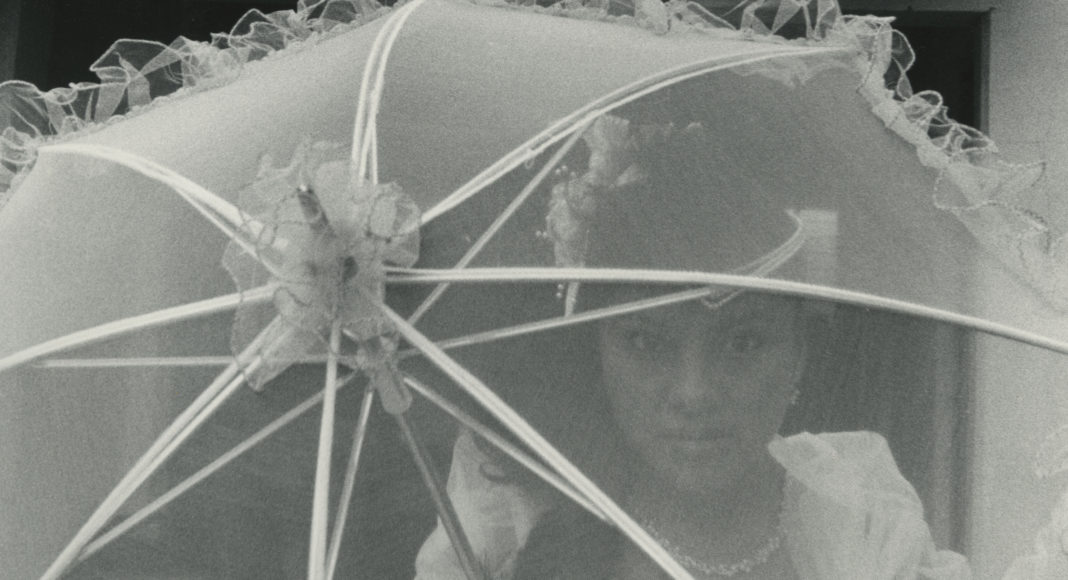A lone man in the garb of a nineteenth century mambi Cuban freedom fighter sits high on a lamp post above a sea of people in Havana’s Plaza de la Revolución.
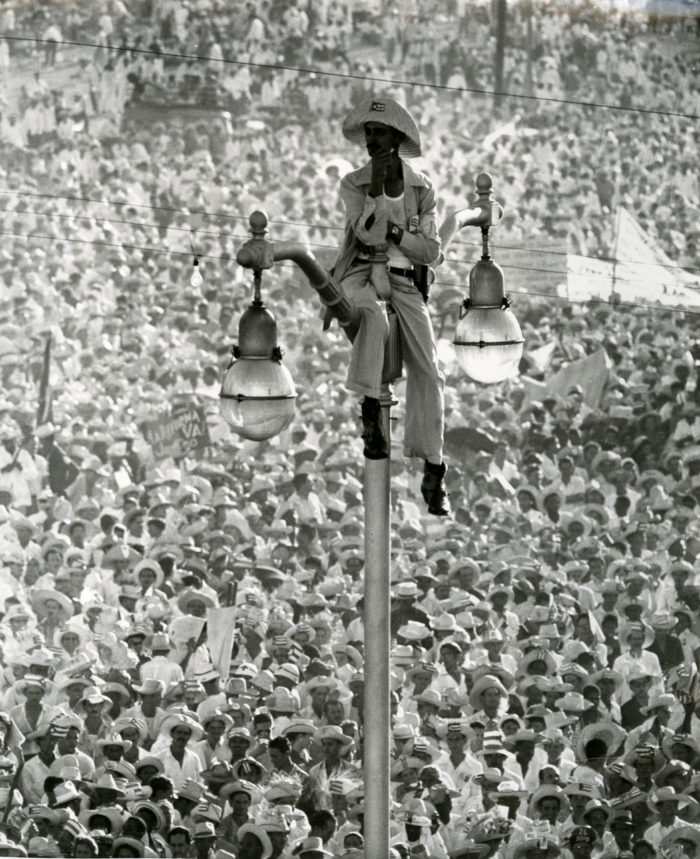
They are celebrating Fidel Castro’s 1959 triumph in the overthrow of the dictatorship Batista, in an iconic photographic image by Alberto Korda.
Above it is an even more iconic image by the same photographer: a scowling Ernesto ‘Che’ Guevara also from the early days of the revolution; an image that has decorated the bedrooms and T-shirts of millions of young supporters of the revolution all round the world.
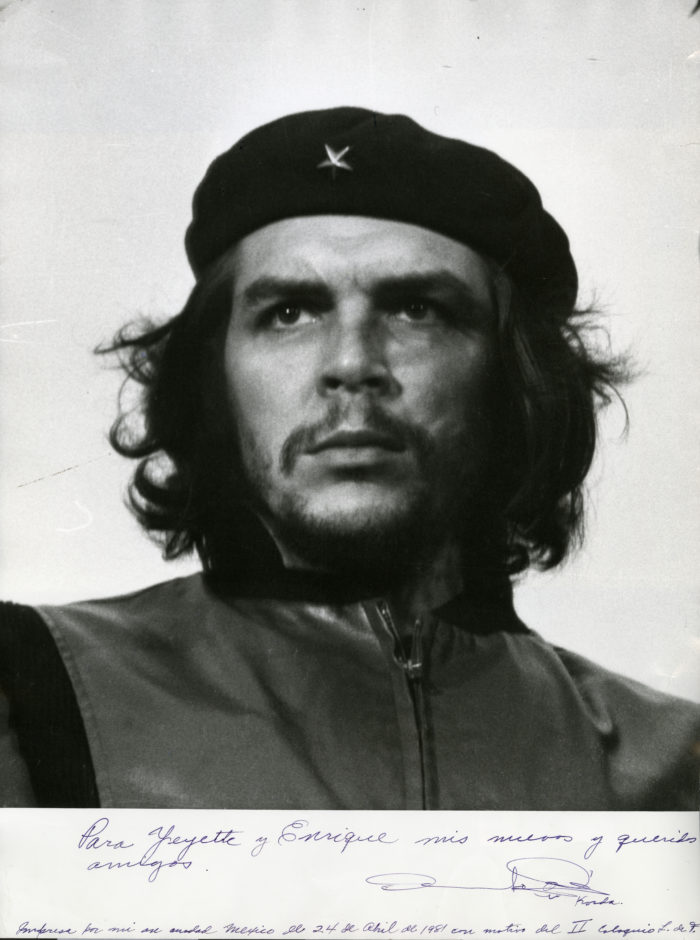
These are two of the 200 images currently included in Urban Impulses, an overview of recent photography from the region currently being shown at the Photographers’ Gallery in London*, which appropriately begins in 1959 and takes us up to the present day.
The two photographs also demonstrate the two directions that photography in Latin America has taken in those sixty years.
Korda’s Quixote of the Street Lamp is a classic photographic print, focused and sober in its effect. Heroic Guerrilla fighter seems to want to challenge the conventions of traditional 20th century photographic practice.
Many among the 73 photographers in the exhibition work within the constraints of these traditions. Even if, as the organizers say they are capturing the life of the streets of cities throughout Latin America, often as they say “reflecting the anger and cynicism, the hopes and frustrations of the cities’ residents, they do so, as in Eduardo Longoni’s portrayal of A Mother of the Plaza de Mayo in Buenos Aires (1981)
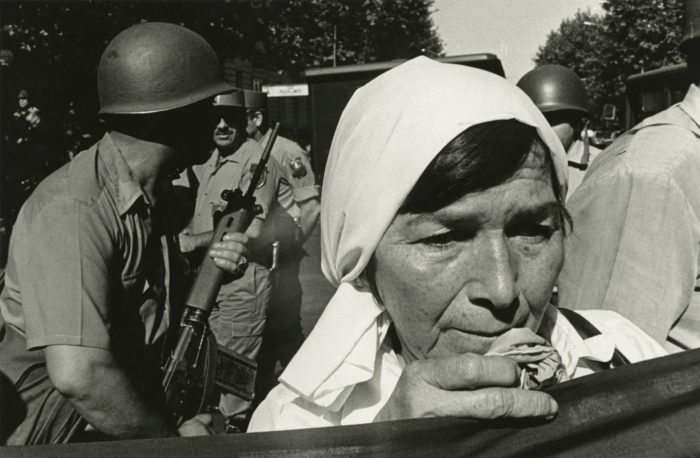
…or Pablo Ortiz Monasterio’s If you Shoot, I Shoot Mexico City 1989.
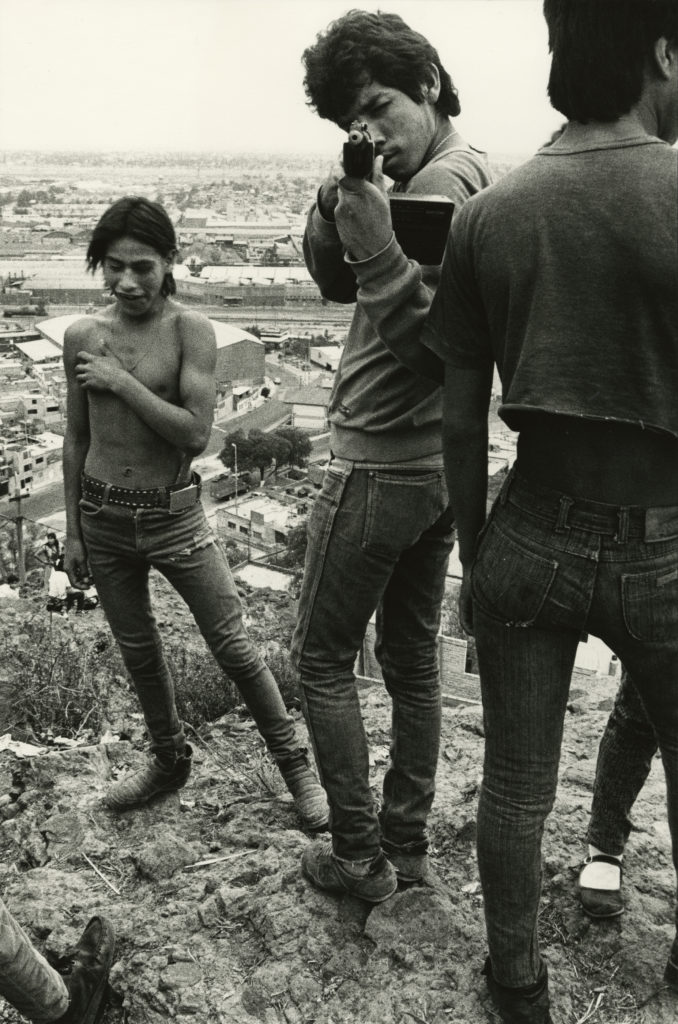
Similarly, others explore enclosed worlds such as that of tango dancers as shown by the great Chilean photographer Paz Errázuriz
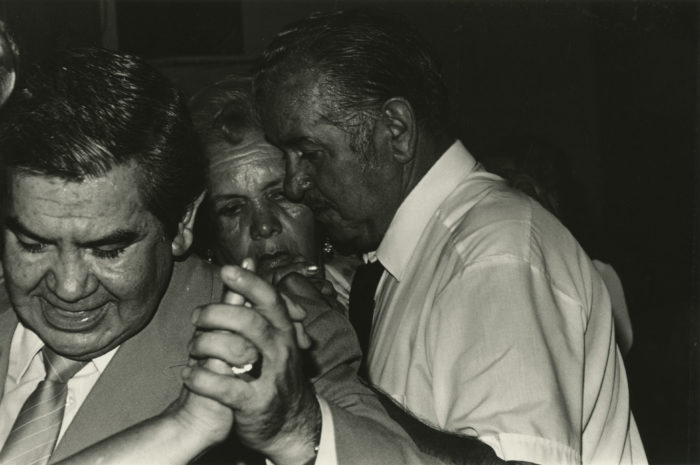
…or of transvestites in From 10 to 11 p.m. by the Mexican Agustín Martínez Castro
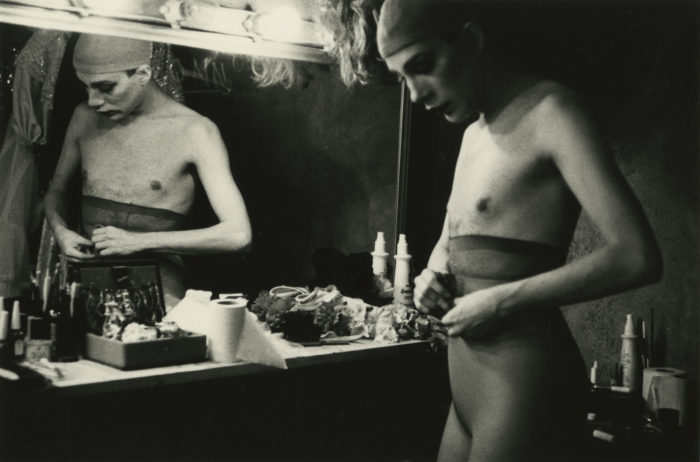
…or torn posters on city walls and mannequins outside stores that are a common sight throughout the region.
Another typically Latin American tradition is depicted in Eniac Martínez’s startling image of a Fifteenth Birthday Party in Ciudad Neza, the sprawling shanty town of some two million inhabitants on the outskirts of the Mexican capital.
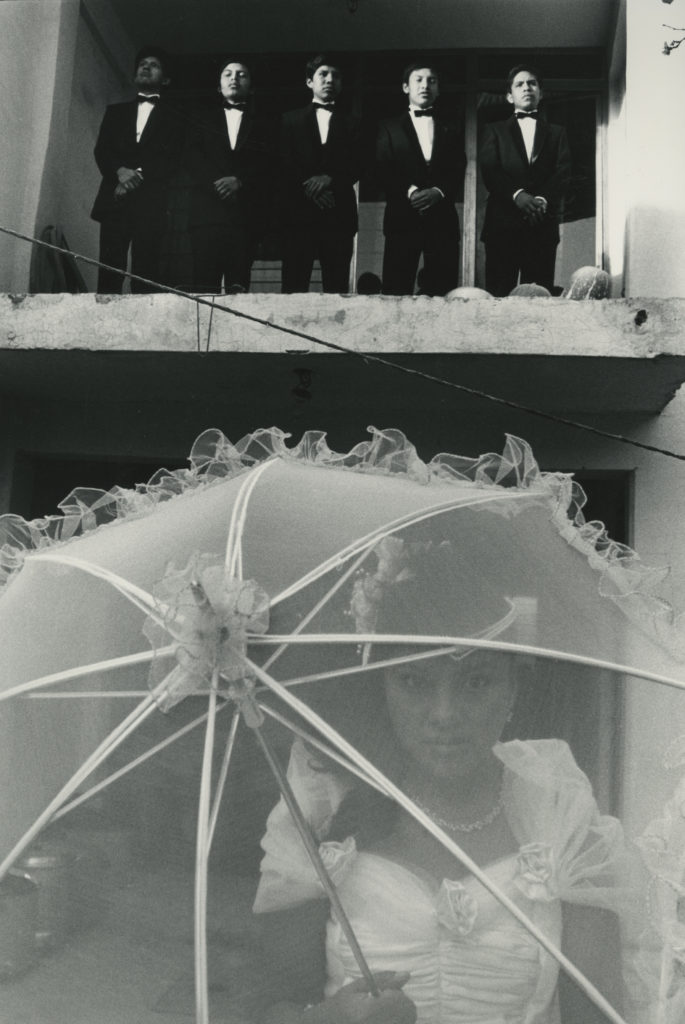
The photographs are part of the collection of Leticia and Stanislas Poniatowski, and according to the curators are intended to avoid Latin American stereotypes.
And yet they often revisit themes that are well-known and do not offer a truly new perspective on the “hopes and frustrations” of Latin Americans today. Possibly this is why a good number of the exhibitors are trying to push the boundaries of what photographs can achieve.
Fernando Bedoya from Peru offers the counterpart to the heroic image of Che Guevara with his photomontage of General Pinochet, skulls superimposed on his trademark dark glasses. (Figure 8)
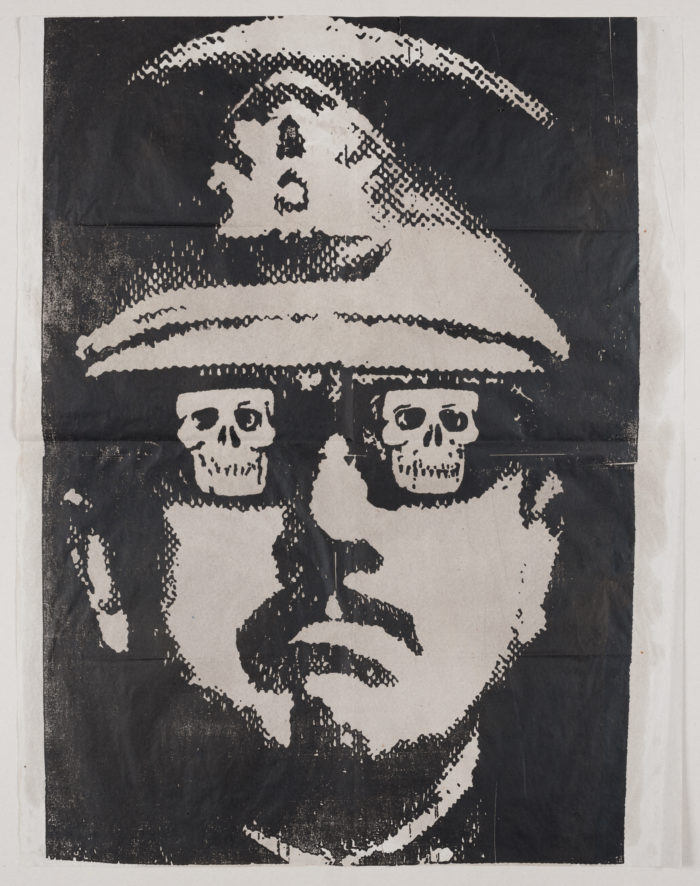
Also from Peru, Jesús Ruiz Durand us represented by a poster of blurred peasant farmers in what he defined as pop achorado, adapting Op-Art and Pop Art techniques to the Andean world.
Similarly, Herbert Rodríguez uses clippings from magazine and newspaper cuttings for his Equis to create work denouncing the injustices suffered by Andean and Amazonian peoples.
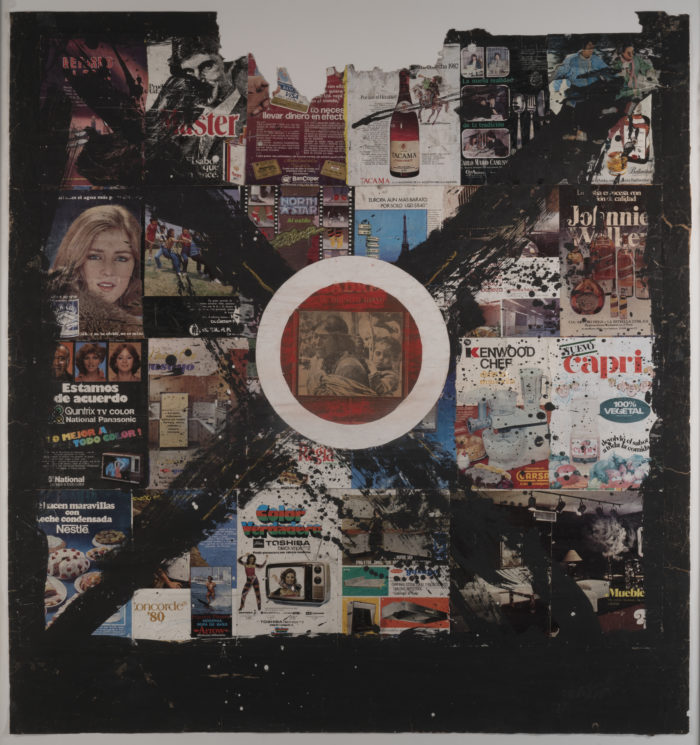
A similar technique is employed by the Mexican photographer/artist Enrique Bostelmannin his impressive huge piece Catharsis. He uses fragmentary, torn photographic images of peasants, children, saintly images, national revolutionary heroes in a vast collage, with in the centre a painted red fire that appears to be consuming them all.
Another Mexican photographer, Lourdes Grobet, perhaps best-known for her extended series on lucha libre wrestlers, is here represented by her troubling Miracles of a German Regent No. 2¸a black-and-white triptych of the avenue in Mexico City laid out by the unfortunate Emperor Maximilian and his wife Carlotta, which suddenly becomes invaded by a small coloured figure apparently out of a video game.
It is obviously impossible to portray the diversity and chaotic energy that has characterised life in Latin American cities over the past six decades. But this selection offers a stunning introduction to the myriad stories found on the streets of a vibrant continent.
*The Photographers’ Gallery, 16-18 Ramillies Street, London W1F 7LW. Until 6 October 2019.

